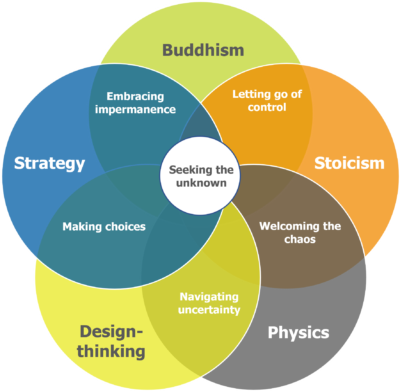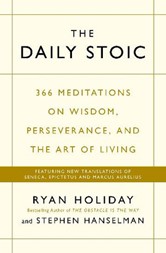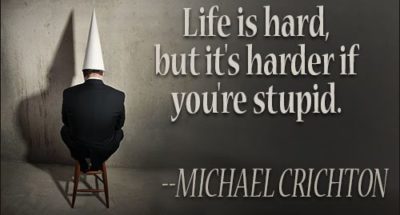What do Buddhism, Stoicism, physics, design-thinking and strategy have in common?
In times of growing demand for predictive analytics amid uncertainty fatigue, it sounds preposterous to suggest not only to love uncertainty, but to purposefully create space for it in decision-making. As illustrated by the 2021 Stress in America survey, conducted by the APA (American Psychological Association), many of us are struggling with making even the basic day-to-day decisions, not to mention pivoting a business or buying from a new brand. Our circumstances have shifted us further towards a satisficing approach to choice-making.
But how and why? In the spirit of triangulation (drawing on multiple sources of “truth”), a brain wave of mine has led me to the question:
What do Buddhism, Stoicism, physics, design-thinking and strategy have in common?

Embracing impermanence

Pema Chödrön (1936 – ) is not the name that I once associated with Buddhist teachings of impermanence – that all things eventually fall apart before they come together again – until I came across her book ‘When things fall apart: Heart advice for difficult times’. Looking for a practical guide on how to cultivate this attitude to open yourself up to letting go or moving forward under pressure without a crystal ball? Her incredibly soothing advice draws on a multitude of examples, including her experience of managing Gambo Abbey in Nova Scotia.
Letting go of control
What if we accepted that we have less control than we would like to have?

Welcoming the chaos
Central to both Buddhist teachings and Stoic thoughts is the physics concept of entropy, also known as the second law of thermodynamics, formulated by William Thompson and Rudolf Clausius. For a more scholarly discussion of these intersections, you may refer to Finn’s (1974) thesis on ‘Religion, Philosophy, and the Second Law of Thermodynamics’ and let me know what you think.
For the purpose of this brief article, the two definitions by Britannica may suffice:
- A measure of a system’s energy that is unavailable for work
- The degree of system’s disorder
- A measure of the chaos and randomness of a system
All increasingly hot (disorderly) systems eventually cool off by falling apart. All innovations eventually lose their appeal. The question is whether to intervene or not, mindful of the sunk cost bias. Feeling the heat of declining visitation, shrinking sales and staff turnover pushes us to restore order by settling on a solution as soon as possible. When life is already quite chaotic and complex, why prolong that state, or even worse, deliberately pull things apart? The cycle of life may offer some answers, as well as design-thinking and strategic decision-making. I will be elaborating more on these concepts in a follow up article shortly.




